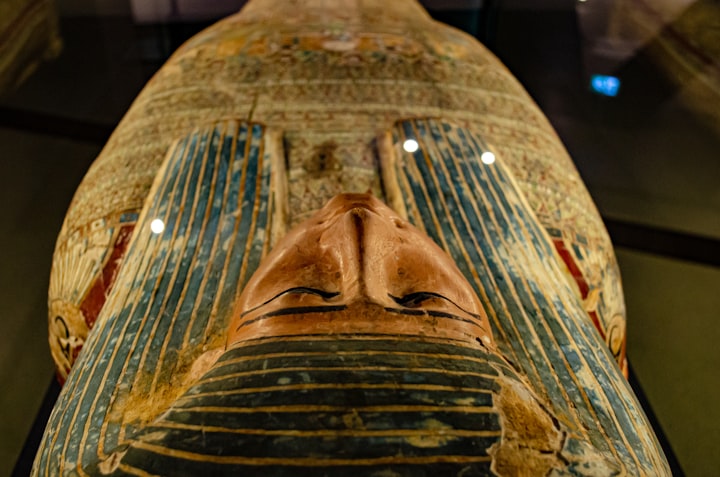Hiroshima: A Journey from Tragedy to Hope
"Recalling the Past, Embracing Tranquility, and Transferring the Torch to the Future."

Hiroshima: A Journey from Tragedy to Hope
The city of Hiroshima, which has been permanently inscribed in the annals of history, serves as a testament to the unwavering fortitude of humanity in the midst of incomprehensible calamity. Three-quarters of a century have elapsed since the momentous occasion when the atomic bomb was unleashed, leaving an indelible imprint on the past, present, and future of Hiroshima.
The Lingering Impact
Upon setting foot in Hiroshima today, one cannot help but sense the profound weight of history permeating the atmosphere. Rather than attempting to expunge its past, the city has elected to build upon its extensive and illustrious legacy. The recollection of the bomb's devastation remains vivid, particularly for those who were raised on firsthand accounts of the crimson sky, the inky rain, and the unfathomable calamities that ensued.
At present, we find ourselves at a pivotal crossroads. The preceding generation, who bore witness to the horrors of that fateful day, is relinquishing the baton to the third generation. These survivors are now the ones imparting their narratives, ensuring that the world will never forget the tragic events of August 6th, 1945.
A Glimpse into History
The Enola Gay, a B-29 Superfortress bomber, commenced its fateful journey from Tinian, located near Saipan in the Pacific. Aboard the aircraft was a weapon that would irrevocably alter the course of history: a nuclear bomb, the first ever to be utilized in warfare. As the crew approached Hiroshima, their objective was the T-shaped Aioi Bridge, a prominent landmark easily discernible from above.
Released from an astounding altitude of 31,060 feet (9470 meters), the bomb detonated 43 seconds later, at an elevation of 1,968 feet (600 meters) above the ground. The resultant mushroom cloud was visible from the air, jolting the plane 11.5 miles (approximately 19 kilometers) away. On the ground, near the hypocenter, Hiroshima lay in ruins, with residences, offices, parks, and lives obliterated in an instant.
A City's Resilience
Looking ahead 75 years, Hiroshima has not only reconstructed itself, but has also emerged as a living testament to the lessons of history. Despite bearing the scars of that fateful day, the city has chosen to embrace them with pride, serving as a poignant reminder of the significance of peace.
During my journey through time, I had the honor of meeting Yuji and his son, Keito, who are third and fourth-generation residents of Hiroshima. Inspired by the stories passed down through his family, Yuji has taken on the role of a guide, sharing the city's history with international visitors. His mission is two-fold: to educate the world about Hiroshima's past and to ensure that his son never forgets the atrocities that transpired on that day.
Echoes of the Past
The Memorial Peace Park in Hiroshima serves as a poignant reminder of the tragic events that occurred on that fateful day. Situated in close proximity to the hypocenter of the bomb, the park is adorned with striking memorials and monuments. A visit to the Aioi Bridge, which was the initial target, provides a stark realization of the city's proximity to annihilation. The Genbaku Dome, also known as the Atomic Bomb Dome, stands as a haunting witness to history. Located a mere 150 meters (500 feet) from the hypocenter, this building, with its distinctive dome and sturdy concrete construction, miraculously survived the blast. Today, it serves as a symbol of the city's resilience and the world's unwavering commitment to peace.
Living Memories
Yuji's resolute commitment to disseminate the history of Hiroshima is profoundly personal. His great-uncle, Mr. Koji Numata, was present in Hiroshima on the day of the catastrophic event. At the age of 92, he recounted his firsthand experiences and presented family photographs, which left an indelible impression on Yuji, who was a juvenile at the time. These narratives constitute an integral part of Yuji's mission to guarantee that the world never loses sight of the atrocities of that day.
The Hiroshima Peace Memorial Museum
One of the pivotal destinations on our itinerary was the Hiroshima Peace Memorial Museum. The museum, which has undergone recent renovations, employs state-of-the-art technology to transport its visitors to the momentous day. It provides a vivid portrayal of the thriving city prior to the detonation, the catastrophic impact of the explosion, and the somber aftermath, frequently through poignant personal accounts that elicit emotional responses.
Teaching Peace
Hiroshima, having undergone several generations since the war, acknowledges the significance of how the world comprehends its history. The remembrance of the past is as crucial as discovering means to transcend it. Hiroshima's exceptional approach to peace education instructs its pupils to not hold Americans accountable but to hold war itself responsible. This viewpoint, founded in peace, functions as a potent instrument for recuperation and progression.
Symbols of Hope
In close proximity to the Atomic Bomb Dome, one may find the Orizuru Tower, which provides a picturesque vantage point of the city and an opportunity to indulge in a bento lunch at the café. Additionally, visitors have the chance to engage in the art of origami by crafting their own paper cranes, a potent emblem of peace. The tale of Sadako Sasaki, a young girl who created paper cranes during her battle with leukemia, deeply resonates with every child in Hiroshima. The Hiroshima Peace Memorial Park serves as a destination for students from all corners of the globe to learn about the city's history and witness its remarkable recovery. Once in ruins, the park now flourishes with vitality and serves as a poignant reminder that, even in the bleakest of circumstances, hope can triumph.
Passing the Baton
As our sojourn through Hiroshima draws to a conclusion, it is evident that the city's forthcoming chapter is one of tranquility, convalescence, and perseverance. Distinguished individuals such as Yuji and his offspring Keito are resolute in ensuring that the past is never obliterated, and that forthcoming generations continue to uphold the torch of peace.
At a tender age, Keito volunteered to assist in the rehabilitation endeavors following the calamitous landslides that befell Hiroshima in 2017. These blemishes may gradually fade away, but they remain perceptible, serving as a reminder that Hiroshima's narrative is still unfolding.
In conclusion, if you ever have the opportunity to visit Japan, it is imperative to include Hiroshima in your itinerary. It is an expedition that will forever be etched in your memory, one that will leave you with a profound admiration for the resilience of the human spirit and the enduring potency of hope.
About the Creator
Enjoyed the story? Support the Creator.
Subscribe for free to receive all their stories in your feed. You could also pledge your support or give them a one-off tip, letting them know you appreciate their work.





Comments (1)
Interesting! Good work!